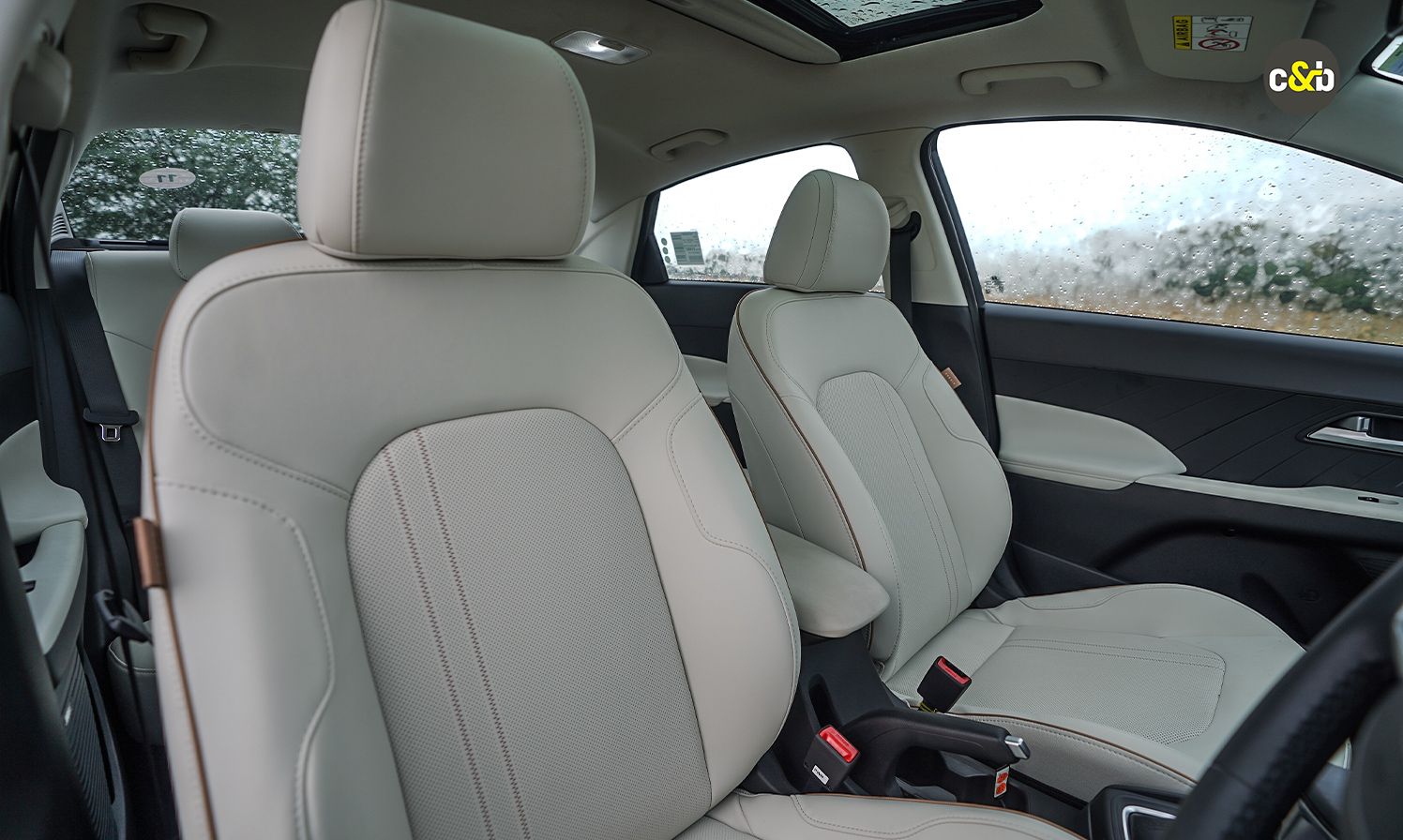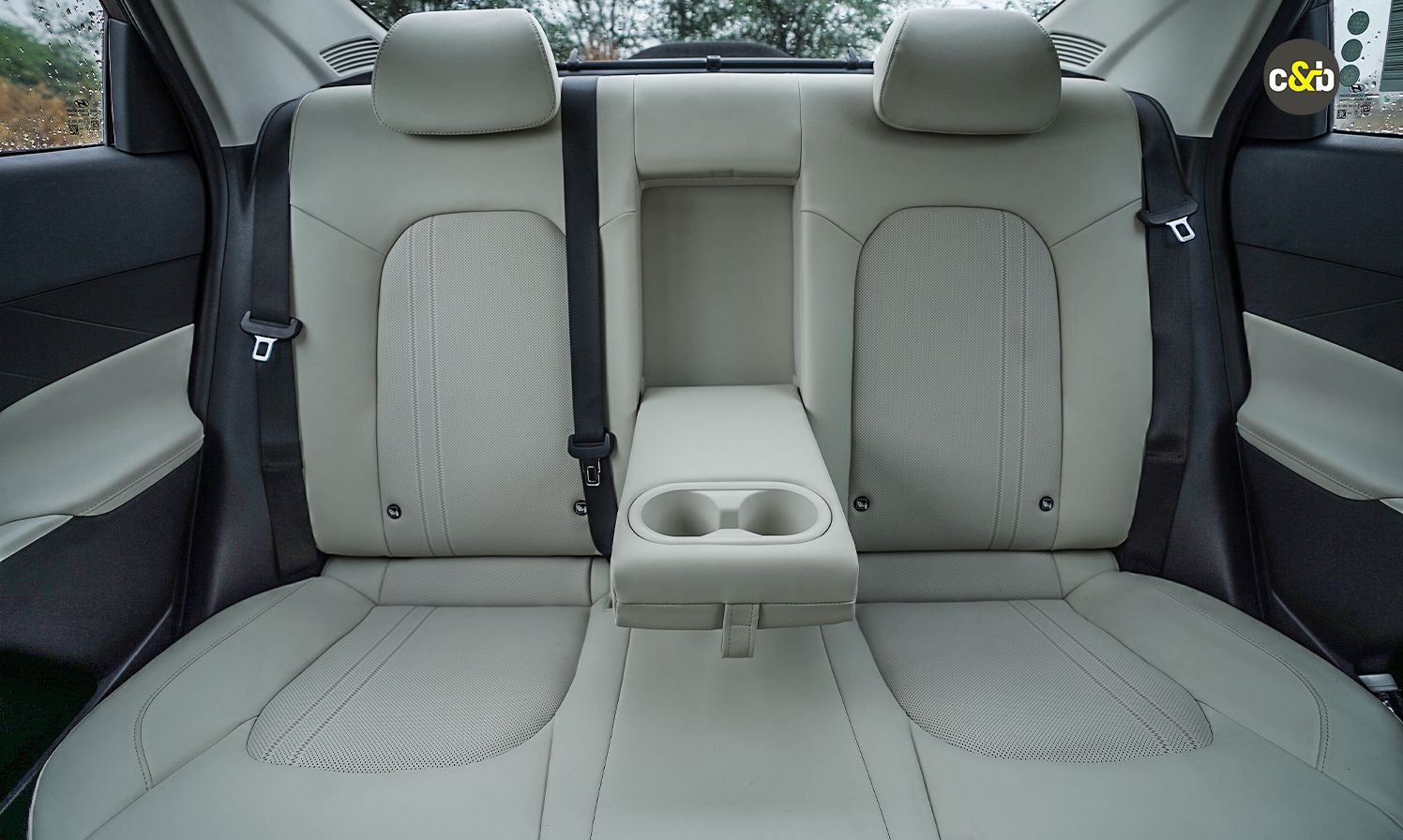2023 Hyundai Verna Review: Both Petrol Engines Driven
Highlights
- The 2023 Hyundai Verna has been launched with 2 Petrol Engine options
- The sedan gets 17 Level 2 ADAS features
- Prices range between Rs. 10.90 lakh and Rs. 17.37 lakh, ex-showroom
The Hyundai Verna has been on sale in India for the last 17 years and not many brands, especially in the sedan space, can boast of that. With sales of close to 5 lakh units, the Verna has been a popular model for the Korean brand in India. The recently launched 6th-generation Hyundai Verna aims to write a new and successful chapter, considering it has a number of significant changes, including the new turbo engine.
Also Read: Sixth-Gen Hyundai Verna Launched In India; Prices Start From Rs 10.90 Lakh
Design

The new Verna has a bit of a quirky design, and may I add somewhat polarising as well. At some places, the brand philosophy of “sensuous sportiness” is quite evident while at some other places it sort of takes you back in time. The highlight for me on the face are the connecting DRLs and these along with connecting tail lamps are provided on all but the base variant of the car. And then you have this black chrome parametric grille, which looks quite nice and this one is there on all the trims of the new Verna.
Also Read: 2023 Hyundai Verna: Variants Explained

On the profile, lot of cuts and creases attract your attention and complementing them well are the 16-inch diamond cut alloys wheels. The satin finish on the door handles also give a unique touch to the profile. On the rear, the Verna lettering behind the glass is also quite impressive. More importantly, the new Venue has grown in size which includes more width and a larger wheelbase than earlier. That should result in enhanced cabin space, so let’s jump in there.
Tech & Interior

Before we talk about space, let’s take a look at the features. The 10.25-inch instrument screen as well as the digital cluster is a part of a single unit, and it is curved towards the driver which really helps. The infotainment system is compatible with Android Auto and Apple CarPlay, and it comes with Hyundai’s bluelink connectivity suite that gets as many as 65 features. Using Alexa, the “Home to Car” feature can also be enabled on the new Venue.

Many features are seen for the first time in the segment, and you can trust Hyundai to do that. These include heated and ventilated front seats and you also get powered driver’s seat. Electrically it can be adjusted for reach and recline but height adjustment is manual. But the good thing is that it is there on all the trims of the 2023 Venue.
Another cool thing is this switchable climate and infotainment controller, which turns from controller of the infotainment system to controls for the temperature settings at just a press of a button. But most of these features you’ll only find in this top SX(O) trim of the car. That’s also the case with the 8-speaker Bose audio system.

There are a lot of voice commands, in all, about 118 and the good thing is that the new Verna also understands Hinglish. Apart from a voice enabled sunroof, other features include Ambient lighting in 64 colours, wireless charger and a leather wrapped two-spoke steering, seen for the first time on a Hyundai in India.

What I really like about this new generation of the Hyundai Verna is that the second row space has really gone up from before. In terms of knee room, head room and shoulder room, everything is so much better and somebody of my height (6 feet) can sit here comfortably for long hours. The longest wheelbase in the segment really contributes to that. In terms of features, you get a centre armrest with 2 cup holders and importantly 3-point seat belts for all the 3 passengers, and all those seat belts also come with reminders, so that’s a nice touch on this new Verna.
Also Read: All-New Hyundai Verna Vs Rivals: Price Comparison
The increase in wheelbase and the new design has made the 2nd row in the Verna a much desirable place than earlier. Also quite desirable is the boot space of 528 litres which is most for any car in the segment. However, the spare wheel is a space saver which you may not like.
Dynamics
![]()
The drive of the new Hyundai Verna took us on the scenic and recently inaugurated Delhi-Mumbai expressway and nonseasonal rains gave us company for a good while. A big change on Verna is the discontinuation of the diesel engine and now you can choose between two petrol engines, both of which are E20 ready and one of them is a turbo.
The 1.5 naturally-aspirated motor continues from earlier and that is what I began with. This 1,497 cc engine makes 113 bhp @ 6,300 rpm along with 143 Nm of peak torque @ 4,300 rpm. Gearbox options are either 6-speed manual or an IVT and I got to drive the latter.
![]()
This drivetrain comes across as a light, easy car to drive. It gives you a feeling that it is really suitable for city conditions, for everyday use because the steering wheel is light, the power delivery is linear and all this helps maneuvering easier in traffic laden roads. Yes it doesn’t feel as sporty as you would like it to, especially out on the highway where I drove for the most part, but you do get to use the paddle shifts, to take things in your control a little bit more.
![]()
The refinement of this engine is impressive and NVH levels too are kept in check. However, a little more feedback coming from the steering will be appreciated, particularly on the highways. Hyundai says that iVT guarantees a fuel efficiency of 19.6 kmpl which is 1 kmpl higher than the 6-speed manual. What also helps is the introduction of Integrated Starter Generator on the car which has made it a little more economical to run. ![]()
There's nothing really to complain about when it comes to ride quality or for that matter, the handling on the new Verna. It continues to excel in both these departments. Low speeds, high speeds or while taking corners, this is one aspect where the Verna continues to impress. Three drive modes - Eco, Normal & Sport are also available, and you get them on both the engines. The significant difference that you would expect is not there, it’s a slightly subtle change between these modes but yes out on the highway, you do feel there’s a little more thrust that comes with the implementation of the sport mode.
Safety

The Verna, like the new Tucson gets Level 2 ADAS features, as many as 17 so that’s a great number to have on this car. They really come in handy out on the highway where the lanes are clearly marked. I experienced these first hand and there were a lot of these features that made my drive a lot safer than it would’ve have been otherwise. Some of these features include Forward Collision warning, Lane keeping Assist, Smart Cruise control and rear cross traffic collision avoidance. That not all the car comes with 65 safety features including 6 airbags, ESC, Tyre pressure monitoring system and front parking sensors.
Turbo Time

Then it was time to sample the new addition to the Verna, one that has got a lot of you excited, the 1.5 Turbo which comes with a 6-Speed manual or a 7-speed DCT. The 1,482 cc motor makes 158 bhp @ 5,500 rpm along with 253 Nm @ 1,500 – 3,500 rpm. This engine is the real deal on the new Hyundai Verna. It is the most powerful engine in the segment and it clearly shows. Add to that a 7-speed dual clutch transmission and yes paddle shifts as well, and you get a package that is ready to take on the best in the segment.
![]()
The car feels planted and feedback from steering is also better on this version. 0-100 kmph is achieved in 8.1 seconds and if Hyundai is to be believed aerodynamics have also slightly improved on the sedan. The claimed fuel efficiency here is even better with manual giving 20 kmpl while DCT promising 20.6 kmpl. These numbers are seriously impressive looking at the kind of performance this drivetrain delivers. 
And it’s not about just performance, this car feels sporty by just the way it looks. The cabin is all-black which looks really nice feels really good with red inserts all over. You get metal pedals, get disc brakes on 4 wheels and those red calipers on the front wheels look really really cool. What you also get on the Turbo variants exclusively is an electric parking brake along with the Fiery Red shade with black roof which just enhances the overall appeal of the car.
Prices & Verdict

On to the prices and the new Verna starts at Rs. 10.90 lakh for the base manual and goes up to Rs. 17.37 lakh ex-showroom for the top turbo DCT. In all you get 10 trims to choose from 4 of which are Turbo. The starting price is much lower than all the main rivals and even at top the car is more affordable than Slavia and Virtus. That should augur well for Hyundai, and it has already shown in the bookings where the car is hovering around the 10,000 mark.

It’s been a good 12 months for the compact sedan segment in India with the arrival of some worthy cars and this new-gen Verna rounds it off pretty well. If you’re looking to buy one, it will not be easy to ignore this one.
Last Updated on March 30, 2023
Related Articles
Latest News
Research More on Hyundai Verna
Popular Hyundai Models
 Hyundai CretaEx-Showroom Price₹ 11.11 - 20.5 Lakh
Hyundai CretaEx-Showroom Price₹ 11.11 - 20.5 Lakh Hyundai ExterEx-Showroom Price₹ 6.13 - 10.43 Lakh
Hyundai ExterEx-Showroom Price₹ 6.13 - 10.43 Lakh Hyundai Elite i20Ex-Showroom Price₹ 7.04 - 11.21 Lakh
Hyundai Elite i20Ex-Showroom Price₹ 7.04 - 11.21 Lakh Hyundai VenueEx-Showroom Price₹ 7.94 - 13.48 Lakh
Hyundai VenueEx-Showroom Price₹ 7.94 - 13.48 Lakh Hyundai VernaEx-Showroom Price₹ 11 - 17.48 Lakh
Hyundai VernaEx-Showroom Price₹ 11 - 17.48 Lakh Hyundai Grand i10 NiosEx-Showroom Price₹ NA - 8.56 Lakh
Hyundai Grand i10 NiosEx-Showroom Price₹ NA - 8.56 Lakh Hyundai TucsonEx-Showroom Price₹ 29.02 - 35.94 Lakh
Hyundai TucsonEx-Showroom Price₹ 29.02 - 35.94 Lakh Hyundai Creta N LineEx-Showroom Price₹ 16.82 - 20.91 Lakh
Hyundai Creta N LineEx-Showroom Price₹ 16.82 - 20.91 Lakh Hyundai New SantroEx-Showroom Price₹ 4.87 - 6.45 Lakh
Hyundai New SantroEx-Showroom Price₹ 4.87 - 6.45 Lakh Hyundai AlcazarEx-Showroom Price₹ 14.99 - 21.55 Lakh
Hyundai AlcazarEx-Showroom Price₹ 14.99 - 21.55 Lakh Hyundai Ioniq 5Ex-Showroom Price₹ 44.95 Lakh
Hyundai Ioniq 5Ex-Showroom Price₹ 44.95 Lakh Hyundai AuraEx-Showroom Price₹ 6.49 - 9.05 Lakh
Hyundai AuraEx-Showroom Price₹ 6.49 - 9.05 Lakh Hyundai i20 N LineEx-Showroom Price₹ 10 - 12.47 Lakh
Hyundai i20 N LineEx-Showroom Price₹ 10 - 12.47 Lakh Hyundai Creta EVEx-Showroom Price₹ 17.99 - 24.38 Lakh
Hyundai Creta EVEx-Showroom Price₹ 17.99 - 24.38 Lakh Hyundai Venue N LineEx-Showroom Price₹ 12.08 - 13.9 Lakh
Hyundai Venue N LineEx-Showroom Price₹ 12.08 - 13.9 Lakh















